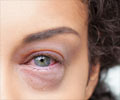
‘Applications of personalized medicine have got many benefits including treating patients with congenital blindness having mutations’
Read More..Tweet it Now
Primary photoreceptor blindnesses - such as those caused by CEP290 mutations - are the most common form of LCA and they are currently not treatable.Read More..
In this clinical study at sites in the United States and Europe, participants received an intraocular injection of an oligonucleotide - a short RNA molecule - created to reduce the mutant CEP290 protein levels in the photoreceptors and restore retinal function.
"It was very dramatic to see one of the patients improve from only being able to differentiate light or dark to reading many letters on an eye chart at two months following the first injection," said lead author Artur V. Cideciyan, PhD, a research professor of Ophthalmology. "So, we performed a thorough interim analysis of all results from all patients."
Ten patients received at least one injection into their worst-seeing eye. At three months after the first injection, half of the patients showed improvements in visual acuity, measured by the ability to either read letters, or distinguish direction of black and white bars.
The most basic functions of photoreceptors are to receive and then signal light. This aspect of vision was tested in patients by presenting flashes of light in the dark and measuring the dimmest flash intensity detected.
Advertisement
The results were highly statistically significant. Evaluations with two colors of flashes suggested that it was the cone photoreceptors used for daytime vision that were improving with the treatment.
Advertisement
All patients enrolled so far into the study had two different CEP290 mutations. The p.Cys998X mutation causing a splicing defect was common in all patients and was specifically targeted by the oligonucleotide.
"We performed an extreme form of personalized medicine where we targeted not just a specific gene but a specific mutation in a gene," said Cideciyan. "It is gratifying to see clinical evidence supporting the action of this oligo predicted from basic science.
In the future, we hope to evaluate patients carrying two identical splicing mutations to determine whether the efficacy of the injection might be even greater."
The authors note that the clinical trial is ongoing to measure safety and efficacy of the injections long-term and the effects of further doses.
Source-Eurekalert












